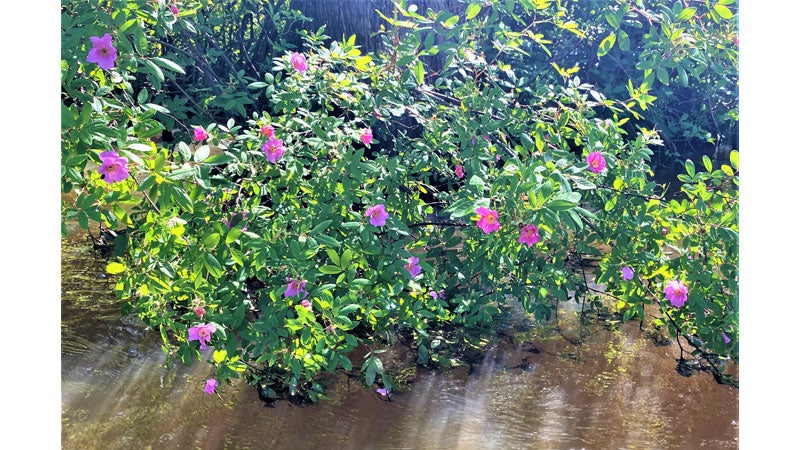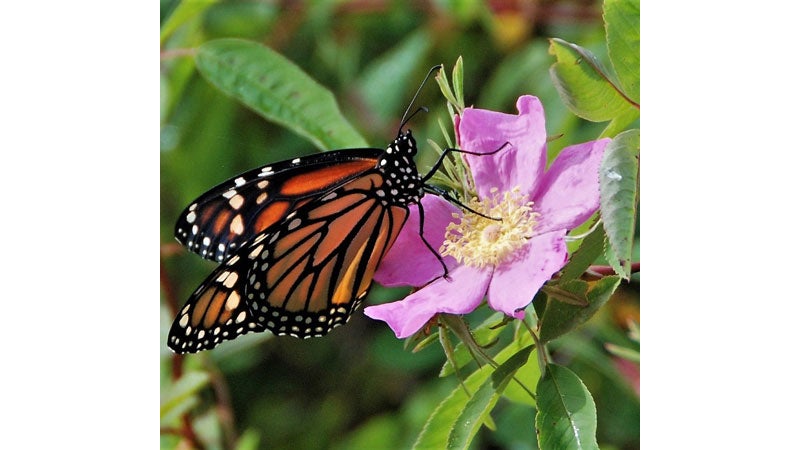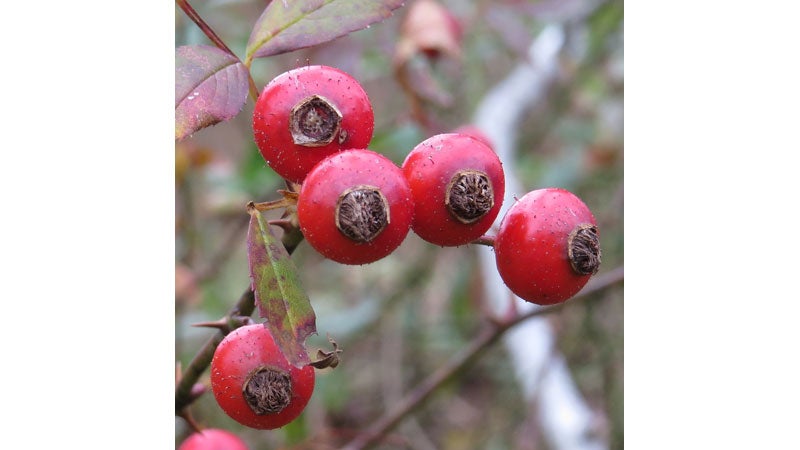Swamp roses grow naturally in freshwater marshes, swamps
Published 12:00 pm Saturday, July 3, 2021
|
Getting your Trinity Audio player ready...
|
By Betsy Washington
June is always an exciting month in the many freshwater wetlands in Northern Neck and beyond, as many plants come into bloom. And one of the showiest blooms belongs to our beautiful Swamp Rose, Rosa palustris, an upright, deciduous shrub typically reaching 3-6 feet high and wide, with arching stems and profusion of richly fragrant rose-pink blooms from late May through June. The stunning flowers are held in clusters of two to four, with five rose-pink petals surrounding a central boss of many yellow stamens and a distinctively flattened disk of styles or female reproductive parts that is often bright pink in the center of the bloom. Individual flowers can be up to 3 inches across, creating a lovely and showy spectacle.
Swamp Rose has rich green, divided leaves, usually with seven finely toothed leaflets, with each leaflet up to 2 1/2 inches long and pointed at each end. The arching stems themselves are handsome and often red, with distinctively curved, stout, brown-to-reddish prickles (thorns) in pairs along the stems. In fall, Swamp Rose puts on a second show when its foliage turns shades of red and burgundy and a multitude of small red rose hips stud the branch tips. The hips, up to a 1/2-inch in diameter, are glandular and somewhat hairy and are eaten by upland game birds such as wild turkeys and quail and songbirds, like cedar waxwings, thrushes, as well as mammals, including skunks, bears and others. These bushy shrubs, with their prickly branches, create an excellent protective cover and nesting habitat for a variety of birds.
Swamp roses grow naturally in freshwater marshes, seeps, sandy swamps, along pond or stream banks and even in roadside ditches and are considered an indicator of high-quality wetlands. And yet they will grow wonderfully in the garden, where they prefer acidic, organically rich moist soils and full sun, and although they will tolerate some shade, they bloom more profusely in full sun. For those seasonally flooded and low damp areas, or pond or stream-side plantings, they are ideal native plants. Swamp Rose spreads slowly from suckers into small colonies, making an excellent bank or soil stabilizer. They are also well suited to rain gardens.
As mentioned, the flowers are not only showy, but extremely abundant and fragrant and attract a variety of pollinators. Bumblebees and other long-tongued bees are attracted to them as well as butterflies, making them a showy choice for butterfly and pollinator gardens.
A hike along the freshwater wetlands and streams in local natural areas or a kayak trip down the Dragon Run in Middle Peninsula in June is a dazzling spectacle, as vast colonies of swamp roses line the banks, flaunting masses of fragrant blooms, rising above colonies of blue pickerelweed and the fuzzy white lizard tails. This is an early summer sight that should not be missed.
As a personal note, I obtained a small Swamp Rose at the NNNPS Fall Plant Sale last year and planted it in a low area of the yard where water tends to sit after heavy rains. This month I was dazzled by 30 stunning blooms on a young 2-foot plant! I can only dream of the beauty in coming years as this shrub grows to its mature size. Plant a beautiful and tough Swamp Rose in a damp corner of your garden, and enjoy this extravagant beauty in your own garden.








